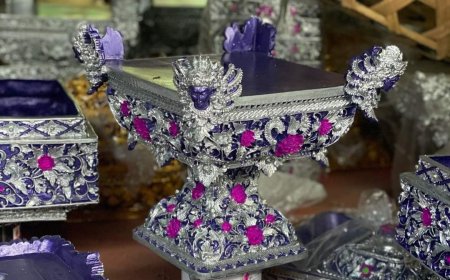The Strength of Artistic Elements in Wayang Lemah Performances
Wayang Lemah, a traditional Balinese performing art, has been revitalized through the creativity of young puppeteers. This screenless show, with white threads and gamelan music, is performed during the day, evening, or religious ceremonies. In the modern era, some dalang utilize social media to introduce this traditional art globally. While challenges remain in maintaining public interest amid contemporary trends, Wayang Lemah remains a precious legacy, combining traditional richness and contemporary innovation in the spirit of Balinese cultural sustainability.
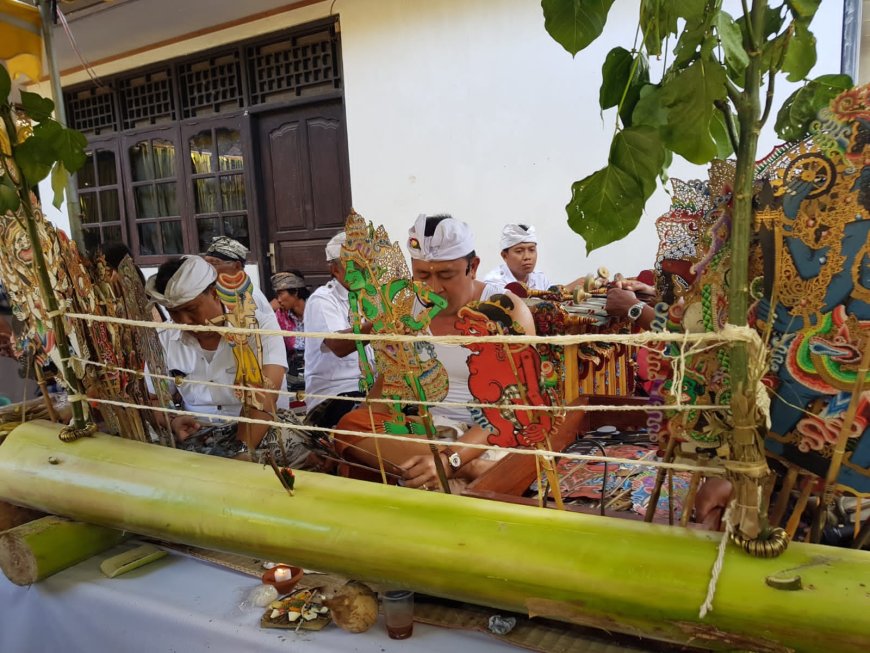
Wayang Lemah, as a form of performing arts with a rich history, continues to serve as a solid foundation in Bali's performing arts heritage. Not only does it enjoy popularity in rural areas, but it has also spread to urban areas, making it an inseparable part of local community life. Wayang Lemah performances are still frequently held in the context of Hindu religious ceremonies, Balinese traditional ceremonies, and as a form of entertainment for those living their daily lives.
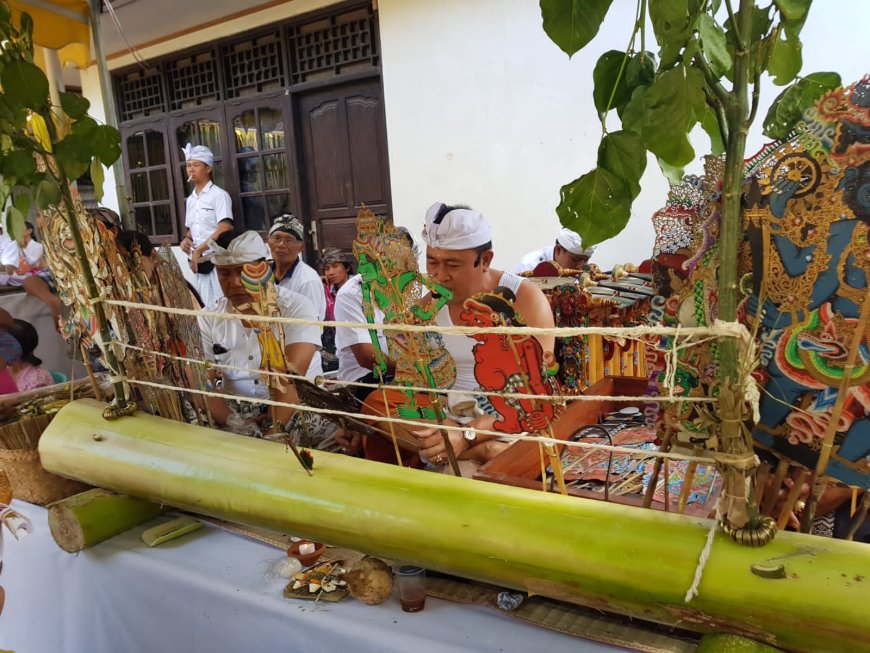
Wayang Lemah Performance Procession (Source: Private Collection)
The origin of Wayang Lemah in Indonesia remains a subject of debate among art experts. The question of whether this performing art originated from Indonesia, India, or another country continues to be a topic of discussion. Nevertheless, within the cultural context of Bali, traces of Wayang Lemah performances are believed to have existed since the 9th century.
Over the past three decades, Wayang Lemah has experienced commendable development. Despite a general decline in performance quality and a decrease in audiences, a new generation of puppeteers has emerged, providing hope for the continuity of this art form. They are ready to take over the roles of older puppeteers who are no longer able to perform. The courage of these young puppeteers in facing the challenges of modernization is reflected in creative innovations, resulting in new puppets that enrich the art of puppetry in Bali. A significant role is also played by female puppeteers who are equally talented and competitive with their male counterparts.
In the past, Wayang Lemah in Bali was an integral part of ritual dances, bebali ceremonies, and balih-balihan performances, often associated with traditional ceremonies and religious events. However, around the 1980s, this art form experienced a decline due to low performance quality and excessive adherence to traditional norms. Other factors, such as the flow of information and technological advancements, also contributed to the waning interest of the community in Wayang Lemah performances. Nevertheless, thanks to the creativity and innovation of puppeteers, especially in introducing creatively new Wayang Lemah performances, this art form has persisted.
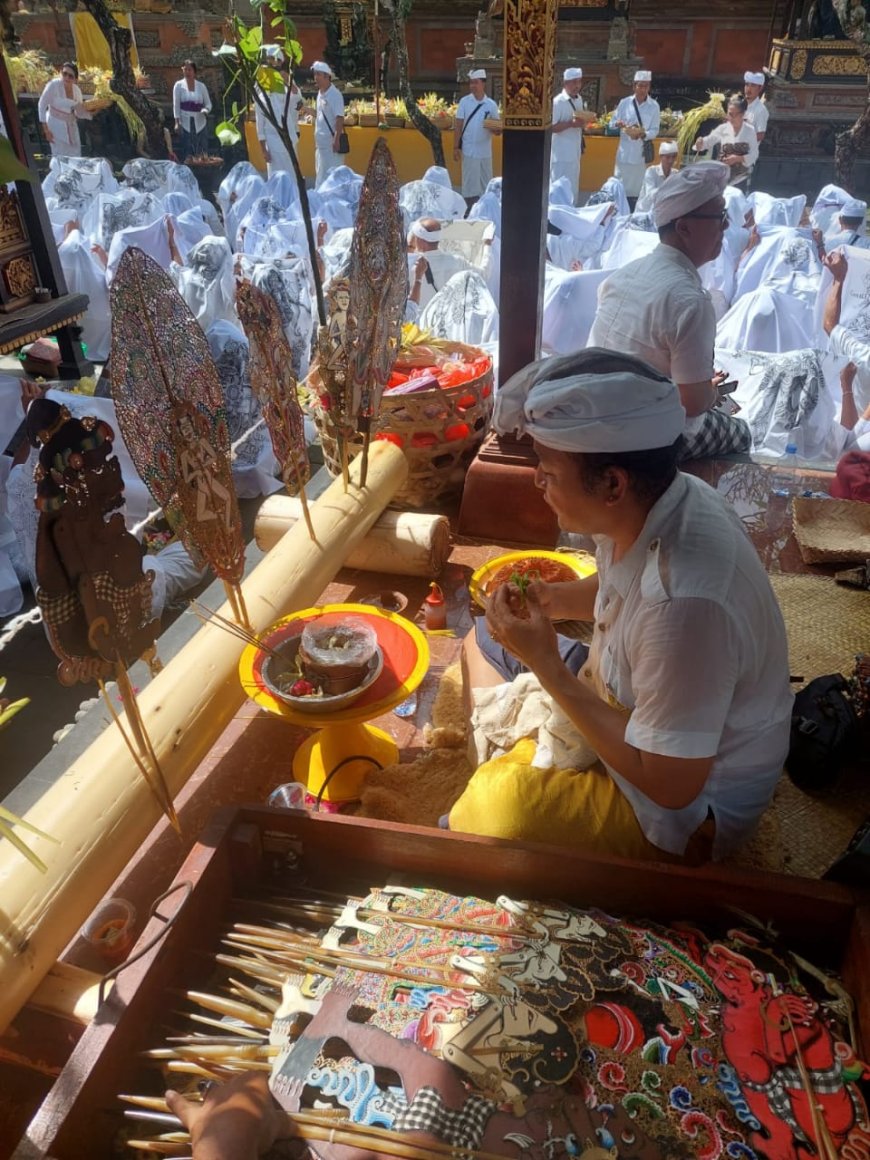
Wayang Lemah Performance Procession (Source: Private Collection)
Wayang Lemah in Bali, serving as a complement to religious ceremonies and performed during the day or ceremonies, appears without screens, color, or oil lamps. Props used in Wayang Lemah performances involve the use of a white thread (tukelan thread) measuring one to one and a half meters. This thread is tied to the dapdap wood pole, anchored on both sides of the puppeteer, providing a unique visual and artistic dimension. The completeness of this performance is enhanced by the accompanying gamelan music using the gender wayang with the slendro scale (five tones).
Wayang Lemah, or Wayang Gedog, performances can often be observed during the day, evening, or religious ceremonies in Bali. The supporting team for these performances typically consists of a puppeteer, one or two pairs of gender wayang musicians, and sometimes involves only 3 to 5 people. These performances often take place around the ceremonial site without a dedicated stage, adding an atmosphere of intimacy and authenticity to the experience of watching Wayang Lemah.
In the contemporary era, the development of Wayang Lemah is inseparable from the dynamics of ongoing modernization. Digitalization and global connectivity play a crucial role in bringing this traditional art to a wider audience. Some puppeteers utilize social media and online platforms to introduce their Wayang Lemah performances to a broader audience, not only locally but also internationally. This opens new opportunities for traditional artists to maintain the relevance of their art amid the currents of modernization.
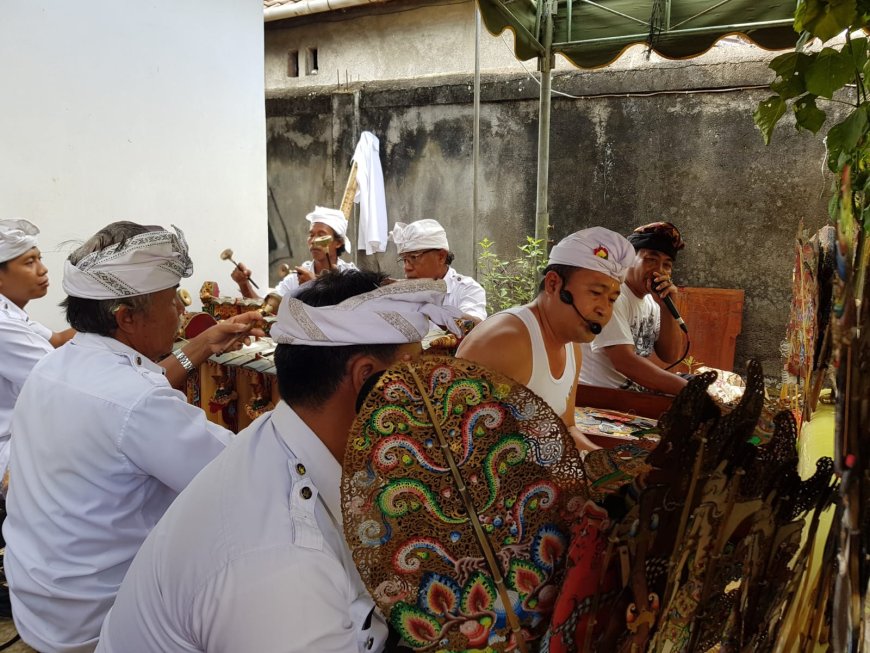
Wayang Lemah Performance Procession (Source: Private Collection)
However, modernization also brings challenges. Public interest in traditional art may erode due to faster contemporary trends that demand attention. Therefore, recognition and support for traditional artists, especially puppeteers, are essential in preserving the sustainability and cultural richness of this heritage.
Wayang Lemah in Bali is not just a traditional performing art; it is a living heritage continually adapting to the changes of time. With a blend of traditional richness and contemporary innovation, the art of Wayang Lemah remains a radiant part of Balinese culture. With ongoing attention, community support, and the creativity of artists, it is hoped that Wayang Lemah will continue to progress, celebrating the past and facing the future with a perpetually thriving spirit.




















































